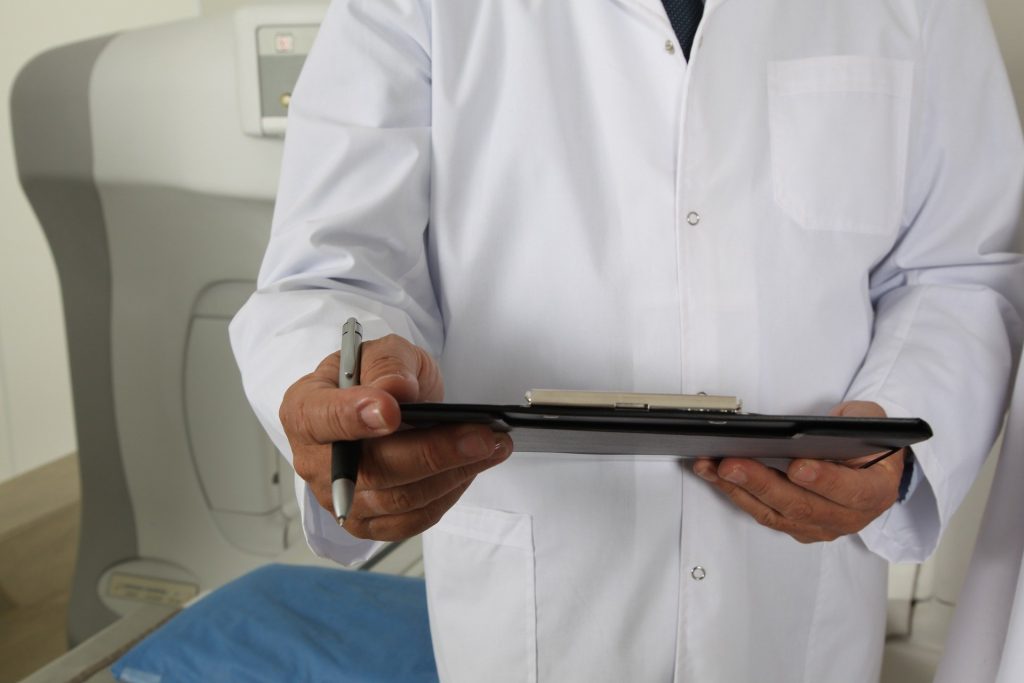A New Alternative to Skin Biopsies

A new ‘virtual histology’ technology being developed by researchers could replace many skin tissue biopsies. The technology is detailed in Light: Science & Applications.
Histology is the microscopic study of tissues and organs through sectioning, staining, and examining those sections under a microscope. Often called microscopic anatomy and histochemistry, histology allows for the visualisation of tissue structure and characteristic changes the tissue may have undergone.
“This process bypasses several standard steps typically used for diagnosis – including skin biopsy, tissue fixation, processing, sectioning and histochemical staining. Images appear like biopsied, histochemically stained skin sections imaged on microscope slides,” said the study’s senior author, Aydogan Ozcan, Chancellor’s Professor and Volgenau Chair for Engineering Innovation of the Electrical and Computer Engineering Department at UCLA Samueli.
The technology may enable rapid diagnosis of malignant skin tumours, reducing unnecessary invasive skin biopsies and allowing skin cancer diagnosis at an earlier stage. This technology had only previously been applied to microscopy slides of unstained tissue, acquired through a biopsy. This is the first time virtual histology has been applied to intact, unbiopsied tissue.
“The current standard for diagnosing skin diseases, including skin cancer, relies on invasive biopsy and histopathological evaluation. For patients, this often leads to unnecessary biopsies and scars as well as multiple visits to doctors. It also can be costly for patients and the health care system,” said Dr Philip Scumpia, assistant professor of dermatology and dermatopathology at the David Geffen School of Medicine at UCLA and the West Los Angeles Veterans Affairs Hospital and a member of the UCLA Jonsson Comprehensive Cancer Center. “Our approach potentially offers a biopsy-free solution, providing images of skin structure with cellular-level resolution.”
The research team, led by Ozcan, Scumpia and Dr. Gennady Rubinstein, a dermatologist at the Dermatology & Laser Centre in Los Angeles, created a deep-learning framework to transform images of intact skin acquired by an emerging noninvasive optical technology, reflectance confocal microscopy (RCM), into a format that is user-friendly for dermatologists and pathologists. Analysing RCM images requires special training because they are in black and white, and unlike standard histology, they lack nuclear features of cells.
“I was surprised to see how easy it is for this virtual staining technology to transform the images into ones that I typically see of skin biopsies that are processed using traditional chemical fixation and tissue staining under a microscope,” Dr Scumpia said.
The researchers trained a neural network to rapidly transform RCM images of unstained skin into virtually stained 3D images like the H&E (haematoxylin and eosin) images familiar to dermatologists and dermatopathologists.
“This framework can perform virtual histology on a variety of skin conditions, including basal cell carcinoma. It also provides detailed 3D images of several skin layers,” said Ozcan. “In our studies, the virtually stained images showed similar color contrast and spatial features found in traditionally stained microscopic images of biopsied tissue. This approach may allow diagnosticians to see the overall histological features of intact skin without invasive skin biopsies or the time-consuming work of chemical processing and labeling of tissue.”
“The only tool currently used in clinics to help a dermatologist are dermatoscopes, which magnify skin and polarise light. At best, they can help a dermatologist pick up patterns,” said Rubinstein, who also uses reflectance confocal microscopes in clinic.
The authors said there is a way to go before clinical use, but they aim to introduce the technology at various scales alongside other optical-imaging systems. Once the neural network is “trained,” with many tissue samples and the use of powerful graphics processing units (GPUs), it will be able to run on a computer or network, enabling rapid transformation from a standard image to a virtual histology image.
This technology could usher in a new age of “digital dermatology” and change how dermatology is practised. Additionally, the research team will see if this artificial intelligence platform can work with other AI technologies to look for patterns and further aid in clinical diagnosis.
Source: UCLA

